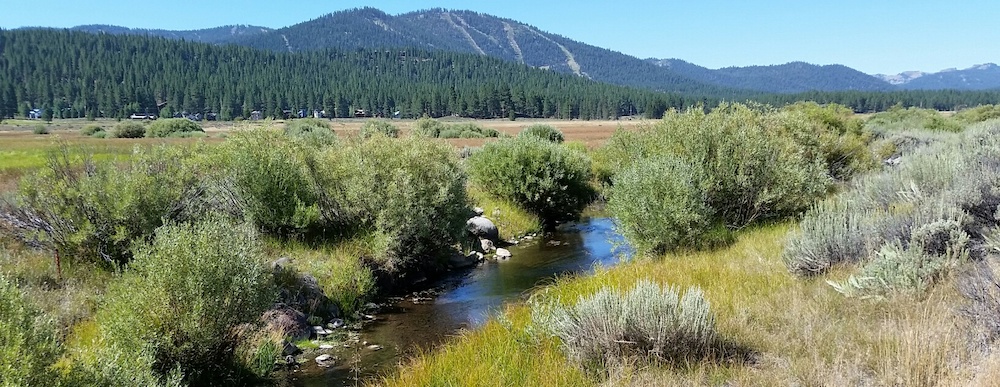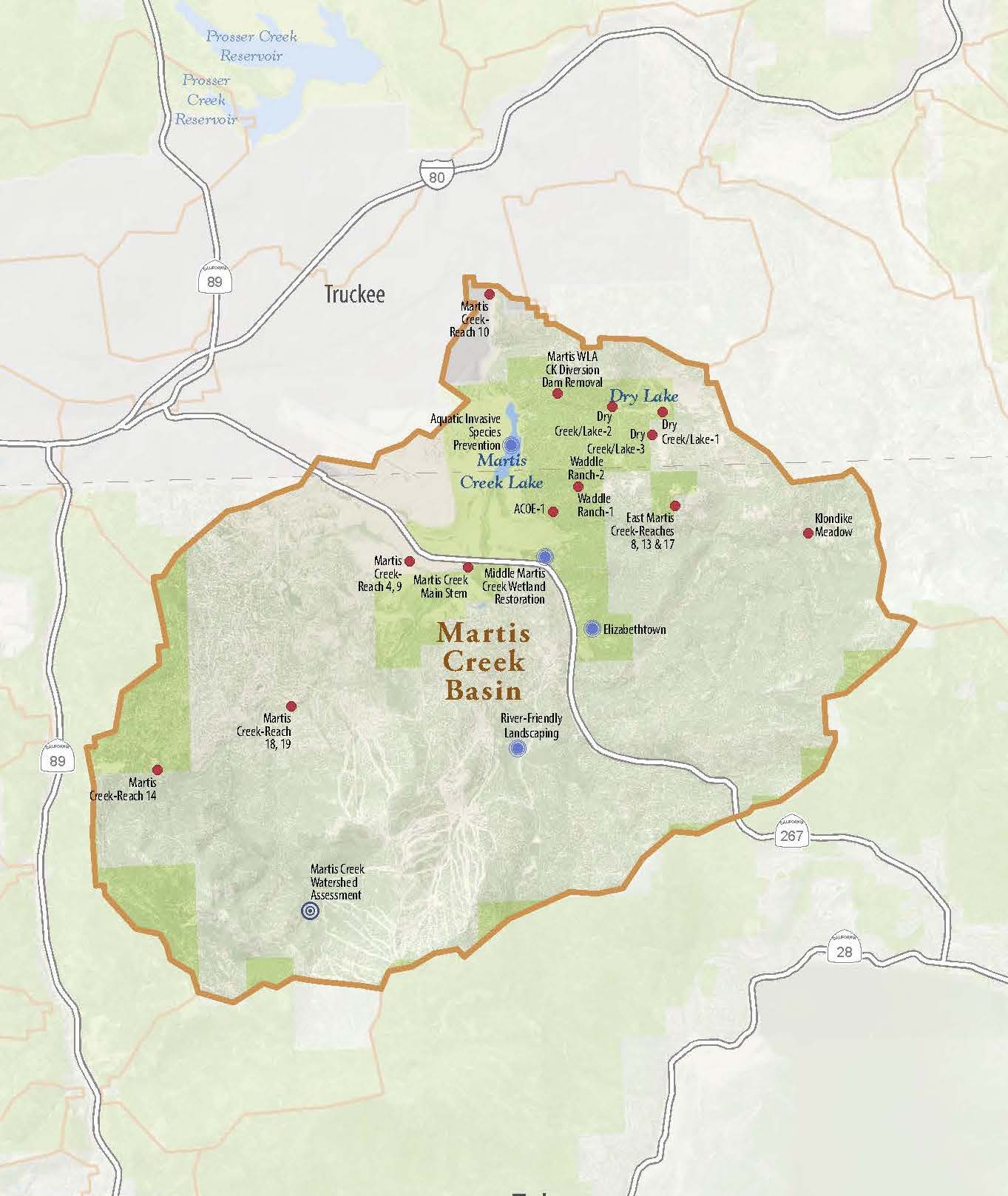Making Martis Wildlife Area greener, wetter, wilder
Wide, open, and highly welcoming, the Martis Wildlife Area is one of the most popular spots in the Truckee/Tahoe basin. Locals and visitors alike are drawn to its big sky beauty, wildlife viewing and easy access. It’s also one of the most environmentally significant parts of the watershed. It stores and cleans water and nurtures plants and wildlife. It even helps mitigate the threats of drought, fire and flood.

Buffering the effects of climate change

Restoring 70 acres of meadow
Creating a gradual slope on the floodplain reconnects streams and rivulets, reducing erosion and sedimentation—making it ‘hold’ water.
Repairing 2 miles of streams
Reconnecting broken channels slows run-off and prevents erosion, making our water cleaner and keeping the meadow wetter.
Re-establishing native species
Putting native plants—like lupine and rushes—back into the meadow helps prevent invasive species from taking over.
Reviving wildlife habitats
Restoring wet meadow allows birds to nest, bugs to support the food chain, fish and frogs to thrive and wildlife to return.
Mitigating drought, fire and flood
A functioning wet meadow buffers the effects of drought, thwarts fast traveling wildfires and abates downstream flooding

Where it
all happens
The Martis Wildlife Area is located 2 miles east of downtown Truckee on CA Highway 267.
For trail access and parking info, visit NorthStarCSD.
Fast Facts
Location: 2 miles east of downtown Truckee on CA Highway 267
Scale: 70 acres of wet meadow and 2 miles of streams
Schedule: July 2019 — October 2019
Budget: $3.2 M
100% funded
Partners:
United States Army Corps of Engineers (USACE)
Northstar Community Services District (NCSD)
Northstar California Resort

Timeline

Dig
deeper
For more information on assessments, monitoring, plans reports, and general information on the Martis Wildlife Area restoration project, explore this resources section.
Updates
The Tompkins Memorial Trail is now completely re-opened. Please look for and respect all signage, as the meadow will be in a fragile state during revegetation.
